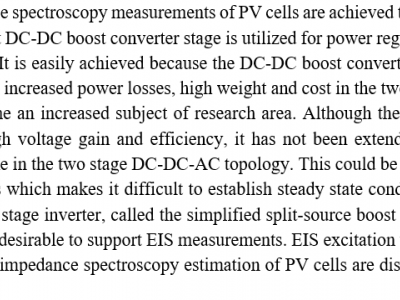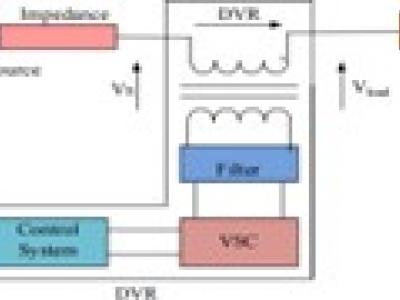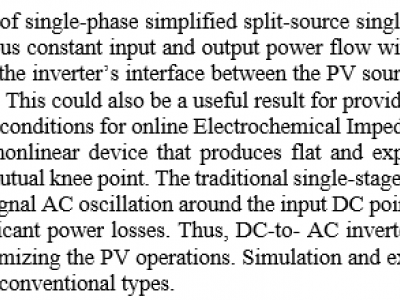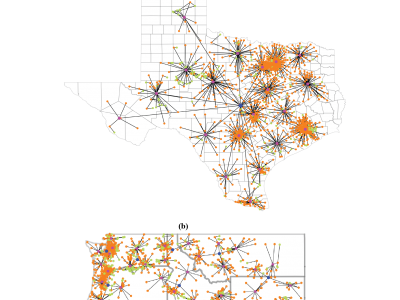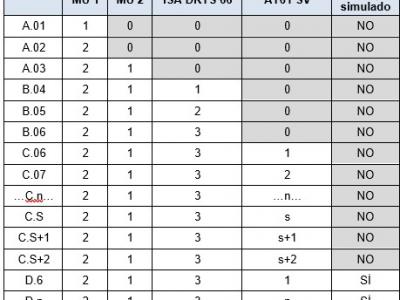Power and Energy

All three datasets are in CSV file format and contain renewable energy and load demand data from August 1, 2024 to August 30, 2024. The dataset is sourced from California ISO and is stored through an open-source repository https://github.com/gridstatus/gridstatus. Renewable energy sources include wind and solar energy, and the load demand is based on data from the Trinity Public Utility District (TIDC) and the Trook Irrigation District (TPWR).
- Categories:
 54 Views
54 ViewsThe power generated by electricity industry is presently concentrating on the mitigation of power quality (PQ) difficulties. Numerous PQ issues are brought about by automation in industry andthe integration of distributedgeneration using powerelectronic converters this calls for PQ enhancement. This contributes to the equipment'sextendedlifespanandincreasedependabilityofsupplies for feeding vital loads into the system. Electric power transmission efficiency from the source to industrial, home, and commercial consumersis measured byPQ.
- Categories:
 10 Views
10 ViewsIn this study, we propose a type of single-phase simplified split-source single-stage DC-to-AC boost inverter topology with the capabilities of providing continuous constant input and output power flow with low input current ripple. These features are crucial for increased efficiency during the inverter’s interface between the PV source and the load, particularly for maximum power point tracking (MPPT) applications.
- Categories:
 47 Views
47 ViewsModern power systems face growing risks from cyber-physical attacks, necessitating enhanced resilience due to their societal function as critical infrastructures. The challenge is that defense of large-scale systems-of-systems requires scalability in their threat and risk assessment environment for cyber-physical analysis including cyber-informed transmission planning, decision-making, and intrusion response. Hence, we present a scalable discrete event simulation tool for analysis of energy systems, called DESTinE.
- Categories:
 82 Views
82 Views
A significant portion of the end users of electricity consists of residential consumers, often exceeding that of other consumer categories, particularly in developing countries. Effective demand side management strategies increasingly rely on Artificial Intelligence (AI) and Machine Learning (ML), yet their success depends on access to high-quality, comprehensive datasets.
- Categories:
 109 Views
109 Views
State-space representation is a practical, efficient and reliable way to evaluate the high-frequency interaction of a transformer with the power network under different types of disturbances. Currently, this representation is available in commercial electromagnetic transient programs; however, this important tool is not yet implemented in the alternative transient program ATP. This paper describes the implementation methodology of the state-space model of the power transformer in ATP using the Norton type-94 component and foreign models.
- Categories:
 30 Views
30 Views
The measurements in this study were carried out at Xidian University's north campus in China. The building density and height in this area are typical of urban environments, and there are fewer uncertainties that could affect the experimental results. Figure shows an aerial view of the measurement environment, including the chosen Tx and Rx locations. Centered at each receiver, a square with a side length 15 times the wavelength of the transmitted signal was constructed. The receiving antenna was moved inside each square following the path shown in the figure.
- Categories:
 28 Views
28 ViewsThis dataset presents the captures of data packets in Wireshark for the scalability analysis of the Process Bus in Digital Substations based on the traffic of Sampled Values, through connection in redundant local area networks (LAN A and LAN B). LAN A is a 100 Mbps network that is saturated close to 10 Sampled Values suscriptions, while LAN B is a 1Gbps network that is not saturated and is used as a reference for the loss of data packets in each case. Emulated SV data is provided by software and a laboratory signal injector.
- Categories:
 133 Views
133 Views
